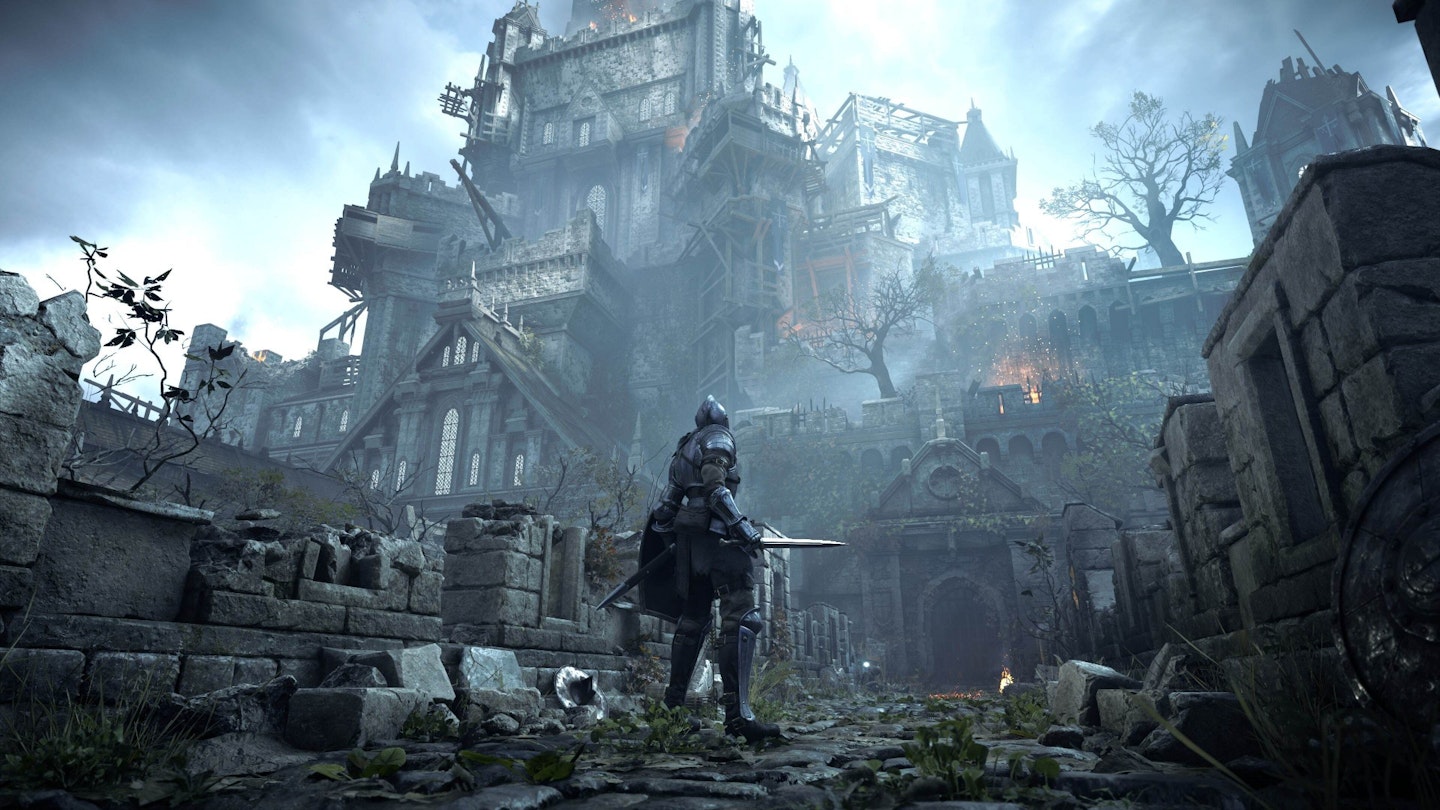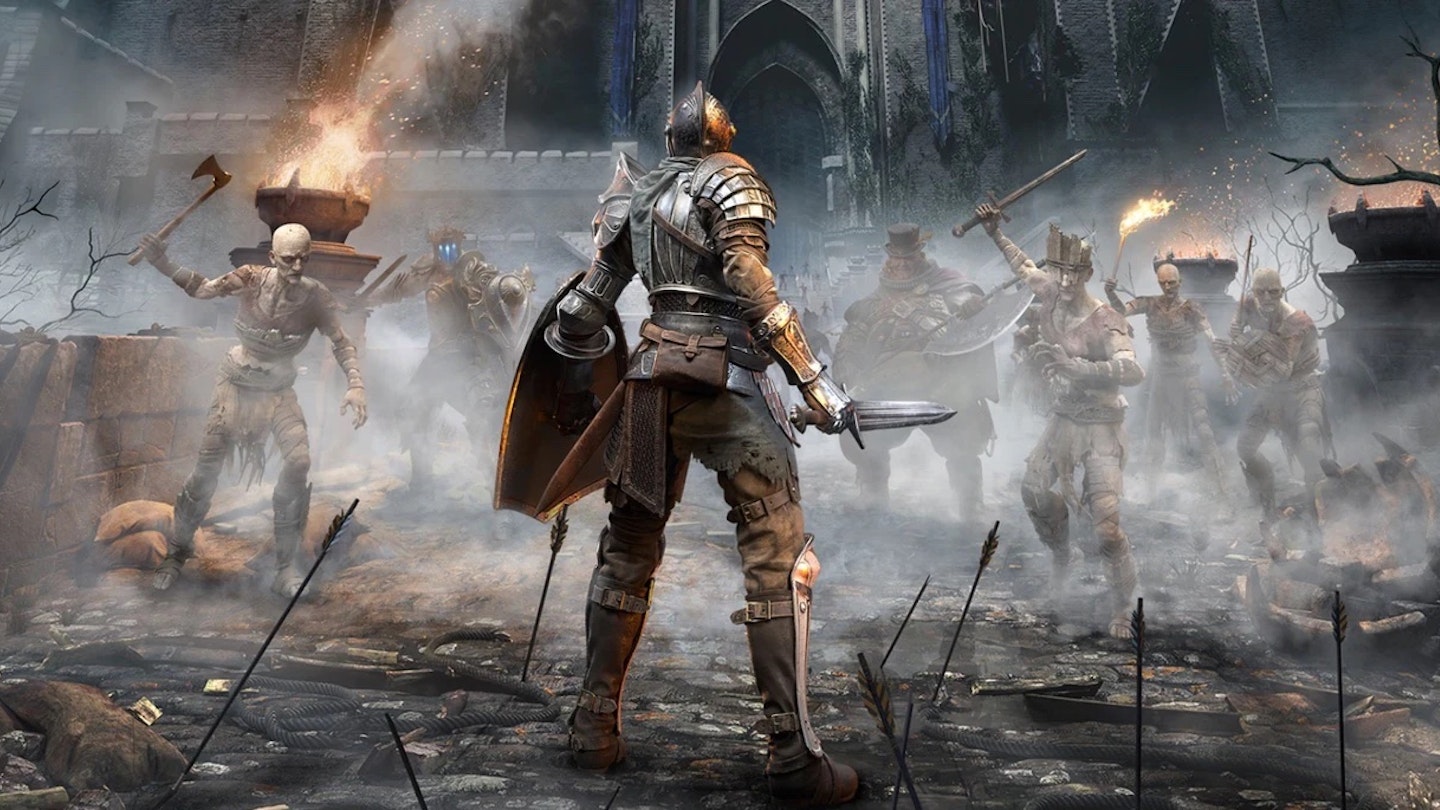Platform: PS5
It's a mark of just how much gaming has changed over the past decade that the stand-out launch title for the PlayStation 5 is a former curio that Sony once declined to publish outside Japan. A dark, medieval fantasy with arcane game mechanics, an oppressively dour tone and impenetrable story, Demon's Souls was as far from mainstream as it was possible to get in 2009. Plus it was hard. Very hard. So hard, in fact, that simply playing it sometimes felt like an exercise in self-harm. And yet, among a certain masochistic segment of gamers, the game took hold, swiftly becoming a cult hit. Over the past decade, FromSoftware’s brutal RPG has paved the way for a string of (slightly) more approachable descendants in Dark Souls and Sekiro{

Now, 11 years later, Demon’s Souls returns to us, not as a museum piece for curious collectors but as a tentpole launch title to showcase Sony’s new hardware. Rebuilt from the ground up by Bluepoint Games (responsible for 2018’s Shadow of The Colossus remake), the new-and-improved Demon’s Souls retains all the sadistic brutality of the original, simply housed in a far more beautiful package. The plot remains as dense as ever, with you as a wandering adventurer having braved the deadly mists to find the lost kingdom of Boletaria. There you are promptly killed by a demon the size of a house (although Souls veterans will do their damndest to avoid this fate) and your soul banished to the Nexus, which serves as a hub for the game’s different locales.
Unlike its successors, Demon’s Souls is a modular, partially freeform game. Five different worlds can be accessed from the Nexus, each with a number of stages, unlocked by defeating bosses along the way. You can tackle the worlds in whatever order you wish, each boasting its own distinct flavour and menagerie of creatures hellbent on your prompt demise.
As with all Souls games, you will die. A lot. It’s an integral part of the whole experience, though Demon’s Souls is more unforgiving in this area than most. While most modern games react to player difficulties by offering a helping hand, this one actively punishes you for your weakness. Dying not only robs you of all collected souls (the game’s currency, used to level up) but reverts you to spirit form, where you are restricted to 50% health (stretching to 75% with use of a certain magic ring). What’s more, every time you die corporeally, the world you’re in shifts incrementally towards ‘dark tendency’. With each successive demise enemies become stronger and, eventually, are joined by additional, insanely powerful black phantoms, which materialise to grind you into bloody pulp. While subsequent Souls games have often felt like a gruelling gauntlet of misery, Demon’s Souls stands out as taking a perverse, sadistic joy in brutalising those who struggle.

What’s more, anyone watching out for reassuring glow of Dark Souls’ bonfires will find no such succour here. Each stage of Demon’s Souls is a self-contained unit with no save points whatsoever, nor places to level up. Die in the attempt (which you will) and its right back to the start with enemies all respawned. It’s not quite as thankless as it sounds, though, as online play allows the enlisting of kindly strangers to help when you're stuck and level shortcuts can often be unlocked, hastening your return to the site of an untimely death and the chance to reclaim dropped souls. Though falling before reaching one of those scarce milestones and being forced to start again is enough to reduce many players to tears.
All of which makes the game sound maddeningly frustrating, which of course it is. But that is both the quirk and appeal of Demon’s Souls and every Souls-like games since. Despite the punishing hardships it delights in heaping upon players, the game is immensely compelling and hugely satisfying. When, after climbing the gothic hellscape of Latria, slogging through a foetid swamp and being molested by gargoyles, you are instantly torn limb from limb by not one but two bosses in the game’s notoriously difficult Maneater encounter, it’s all you can do not to shut the game off for good. And yet, an hour (or a day, or a week) later when you finally put the monstrosities down, the sheer sense of euphoric accomplishment is like nothing else. Meanwhile, the scope of gear choices, character builds (hint: newbies should start with the Royal class and opt for magic over might), playstyle-adaptable accessories and tactical flexibility combine to create a game of incredible depth that bears hours-upon-hours of experimentation and repeated play. Though not without work.
Demon’s Souls may be, without exaggeration, the best-looking console game ever made.
The game mechanics are as impenetrable as ever, with the series’ byzantine upgrade process and more obscure concepts not even remotely explained (be prepared to consult the various online wikis with some regularity), but Bluepoint has conceded by making at least some aspects marginally less opaque. The world tendency system, for example, now has a much clearer visual indicator accessible from the menu, and some of the game’s more maddening quirks (like having to manually slog back to Stockpile Thomas to stash burdensome gear) have been thankfully removed.
Visually, the remake’s changes are far more radical. Souls games have never been all that much to look at: their impressive architecture too often shrouded in murk, and the games long blighted by ugly player models. That couldn’t be further from the truth here, however. Bluepoint has rebuilt the game’s aesthetic from top to bottom and the result is nothing short of breathtaking. Indeed, Demon’s Souls may be, without exaggeration, the best-looking console game ever made.
Characters are expressive and detailed, with naturalistic features, while the various demons and monsters are painstakingly rendered to the extent that you’re often happy to be mauled just to witness the beauty of your killer’s animation. The environments — from the ruined majesty of Boletaria Castle to the oppressive gothic metalwork of Latria’s prison — are some of the most stunning ever created. And as for the epic boss encounters, the sheer giddy spectacle on offer when the Storm King looms into view or the colossal Tower Knight slams its monstrous shield down inches from your face is enough to stop you in your tracks.

The PS5’s DualSense controller comes into its own here as well, delivering finely detailed haptic feedback to give the hulking enemies a tactile presence. Meanwhile, the PS5’s almost instant load times make traversing Boletaria’s various districts feel effortless. Combined with visuals that take full advantage of the machine’s graphics power, Demon’s Souls is the perfect ambassador for the PS5 hardware: a launch title that delivers a deep, engrossing experience while showcasing what a next generation platform can really do.
Kinks have been ironed out and niggles corrected but, at its core, this is the same seminal title that turned heads back in 2009, retaining the same merciless challenge, the same engrossing gameplay, and the same confusingly-placed apostrophe. As a remake, it has been perfectly enhanced and fine-tuned, blessed with a visual upgrade so dramatic as to place a nostalgic throwback right on the bleeding edge of modern gaming.
It’s wildly ironic that one of the least accessible games every made is now the perfect gateway to the new flagship PlayStation, but Sony’s strategy in dusting off this once-abandoned title has proved a masterstroke. If you have the stomach for it and can face the challenge, Demon’s Souls should be the very first title in your shiny new console’s download queue.
Buy Demon's Souls now from Amazon.{
